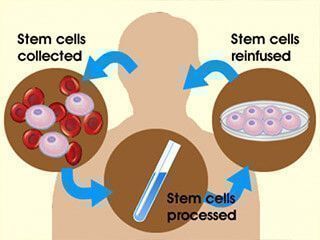Cord stem cells: therapeutic use in transplantation
Cord Stem Cells Have Been Considered, Since Their Discovery in the 1980s, As the Source of Stem Cells with the Most Applications in the Field of Regenerative Medicine. These Cells possess Very Great Therapeutic Potential, Making it possible to use them in the Treatment of Various Diseases. For this Reason, it is mounts important that families Expecting a baby be properly formed in order to make an informed decision about wheather to donate or store the unborn child’s cord stem cells. Stem Cells can be distinguished agording to Where they originated:
- Umbilical Cord Stem Cells;
- embryonic stem;
- Adult Stem Cells.
Cord Blood is a Very Productive Source of Stem Cells. When diversified Into adult cells, cord Blood Stem Cells can be used clinically to Treat Various Genetic, immune, and event. For this reason, the cord blood specimen collection procedure should be performed by qualified personnel with all possible precautions to avoid contamination.
Once the collection of the sample is complete, they processed with sellend the material to a cord bank. At This Facility, The Cryopresservation: The nucleated fraction of stem cells will be selected and a substance will be aided to the total number of nucleated cells to prevent their osmotic shock. Science Has Shown That The Preservation of Cord Stem Cells, by Cryopresservation Technique, Can Extend for Over 24 years, Without Altering Their Aability to proliferate and differentiated 1 .
In Termes of Therapeutic Use, Umbilical Cord Stem Cells Are Used In The Hematopoietic Transplants In The present of Malignant Neoplasms. In this area, two to their Immunological Immatation, Cord Stem Cells Have Been More Successful Than Bone Marrow Stem Cells, as they have Shown an Better Performance Against Rejection.
Transplants Can Also Take Place Between Haploidentical Donors with 50% histocompatibility, in simpler words when the donor has tissue characteristics that half match those of the recipient (hence “haplo”). For full compatibility to eye, patient and donor must be the same person (autologous transplantation). But Such Compatibility Can Also Exist Beteween a Recipient and A Donor Who Are Not Related To Each Other (Heterologist Transplantation).
Privatetely Storing Umbilical Cord Stem Cells Alwa Families to use the sample when needed, either for the donor or for siblings or parents, if compatible.
The Field in Which Cord Stem Cells Find Uld Use Is Not Only in Hematologal Diseases, and this is two to their Regenerative and immunomodulatory properties. Studies have evaluated the ’ Use of these cells to Treat Childhood Cerebral Palsy, Type 1 and Type 2 Childhood Diabetes, Autoimmune Diseases, and Autism 2.3 . Evidence has also been found in some trials clinicians, in which there were improvements in the neurological condition of subjects with adrenoleukodystrophy, a very serious genetic disorder due to mutations in the X chromosome, affecting the central nervous system and adrenal glands 4 .
Although Progress Has Been Made in Research, in Italy TODAY MORE THAN 95% OF UMBILICAL CORDS END UP IN BIOLOGICAL WASTE. The Day of Delivery is the only time to performers the cord stem cell sample collection, and for this reason it is important for families to make anmand and conscious choice.

